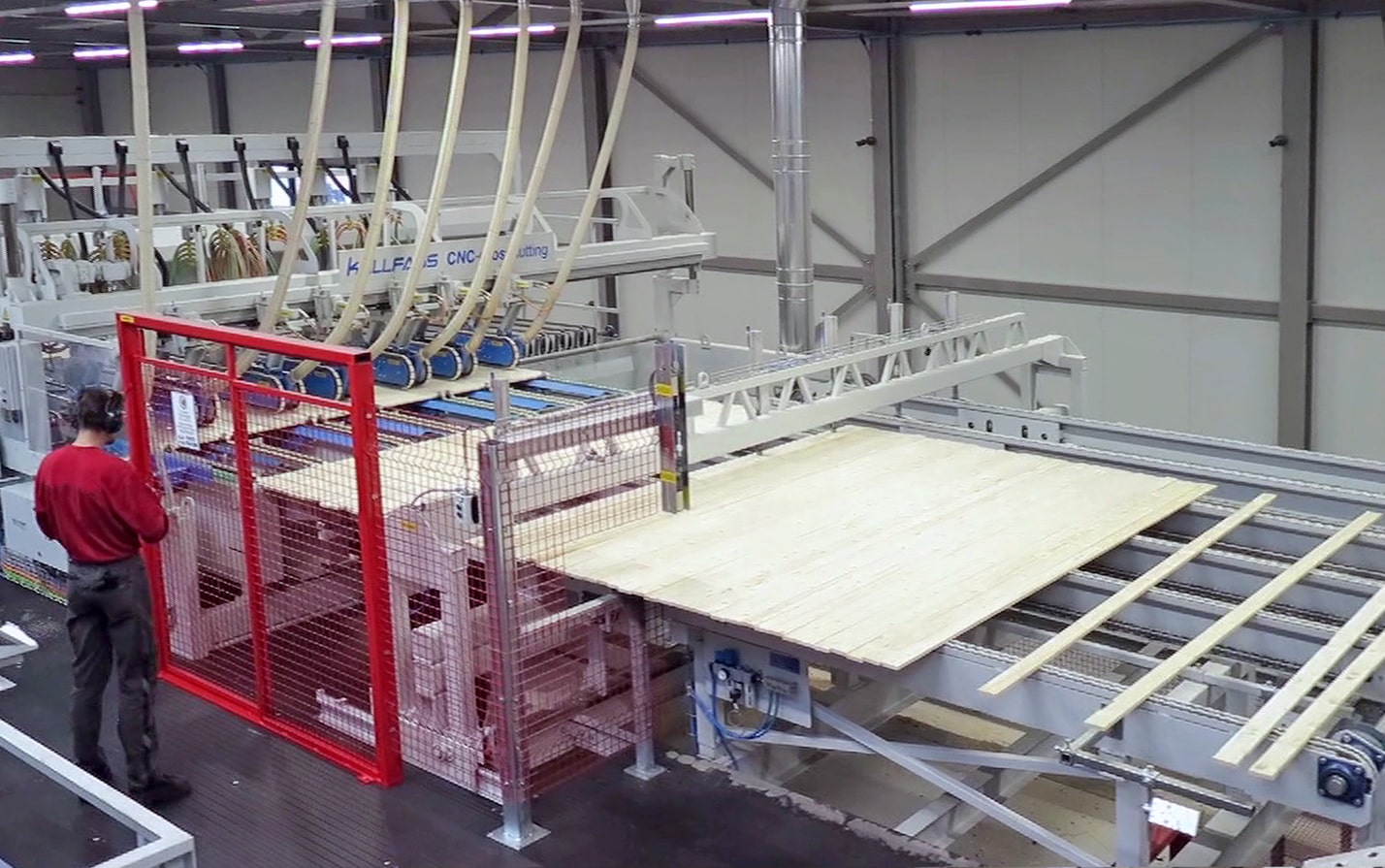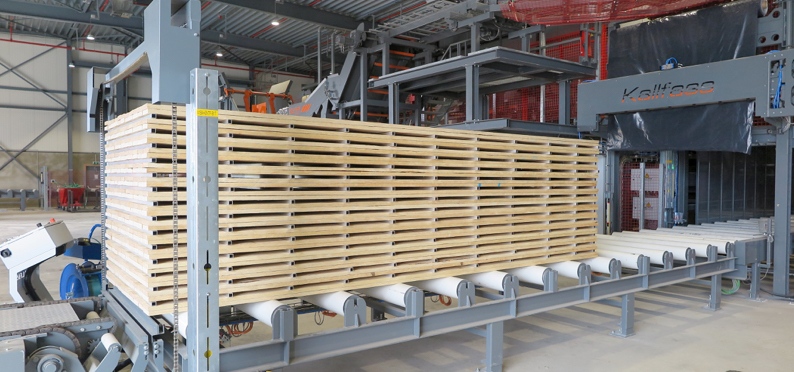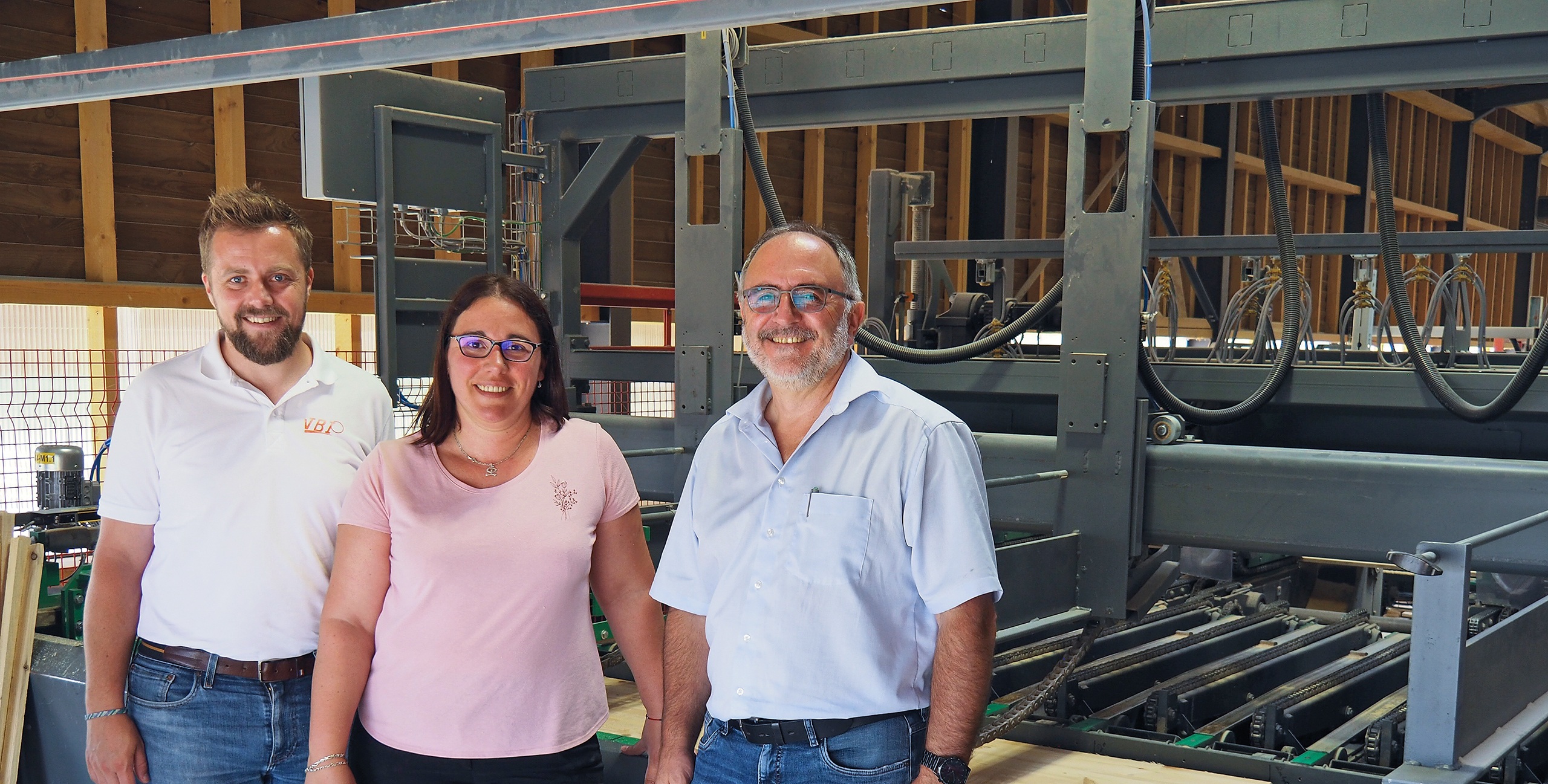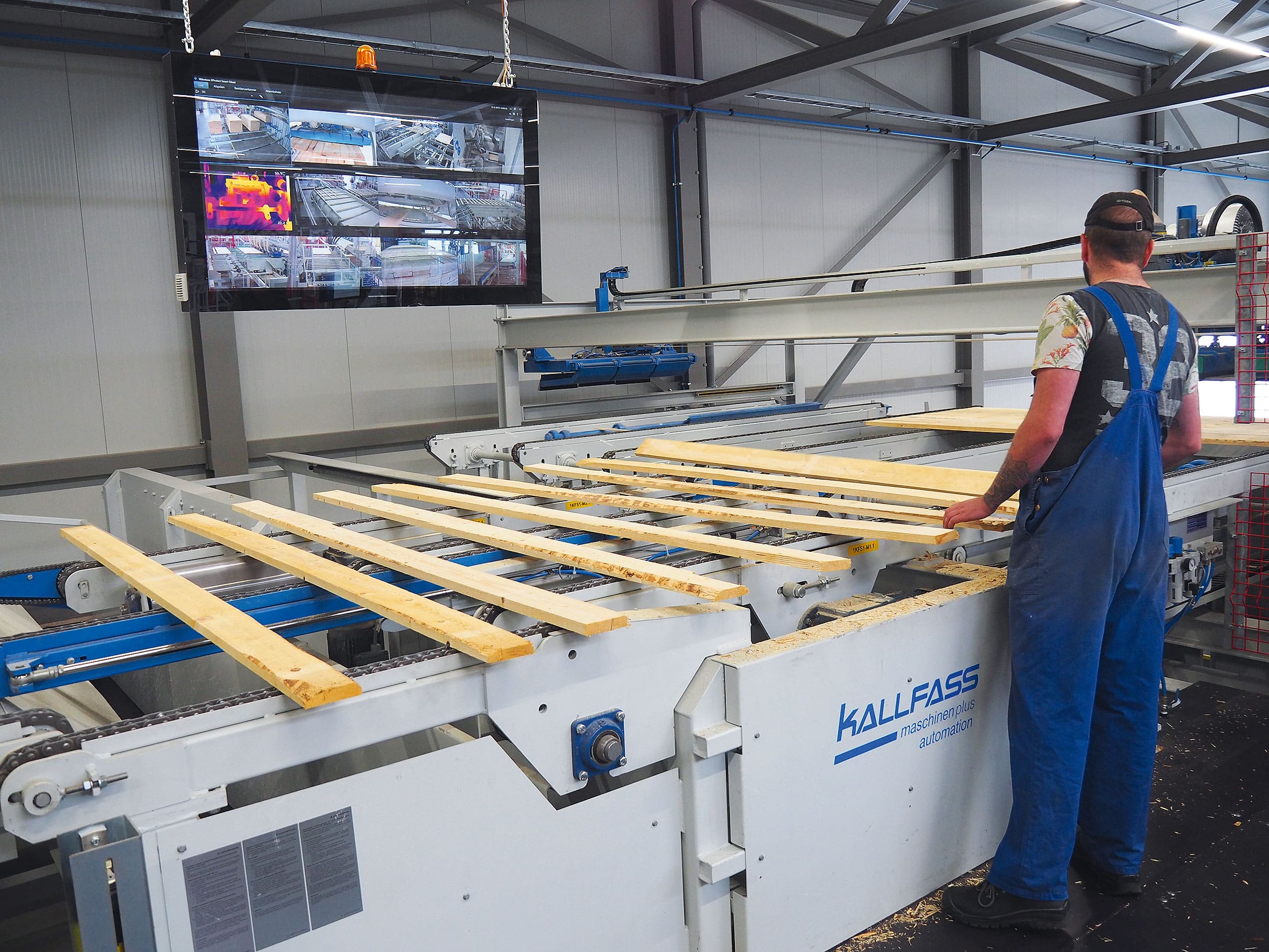Automation solution
Sawing
Our CNC-controlled multiple cross-cut saws are an integrated component of automated production lines. There is a permanent focus on a continuous material flow and the efficiency of the process during linkage of individual processes.
Installation example
Multiple cutting of timber
Controlled and gentle with material
Controlled timber sorting
UNSCRAMBLING WITH AND WITHOUT SINGLE FEED UNIT
Immediately after a sawing line or tilt destacking, it is often necessary, to separate the workpieces that arrive in a batch in order to form a material film/carpet from which they are then transferred individually or in layers to the next processing step. Depending on the required number of pieces and the material cross-sections, different technologies are used for separation or layer formation.
Continuity at high speed
High throughput
FEEDING: Multiple cross-cut saws
Workpieces can either be fed individually to the multiple cross-cut saw with the aid of a single feed unit or in entire layers, ensuring a constant material flow at even a high production speed.

Flexible and efficient
The ends of raw or planed timber workpieces are cut with millimetre accuracy to the desired fixed lengths in cross-cut saws. The workpieces can be processed individually or layer by layer. Powerful saw motors and feed speeds of max. 50 m/min ensure a high throughput.
Several cutting programs can be stored to ensure maximum production flexibility, or data can even be imported from ERP systems and master computers.
Time-saving process solutions
Fully automatic material flow
STACKING: Shipping packages
Stacking of timber (including in multiple lengths) can be realised with placement forks or vacuum lifters, with the timber being collected in layers and deposited layer by layer on the shipping package to be formed. Dispatch strips can be laid between several layers to stabilise the shipping package. Strip laying is automatic. Where necessary, the shipping package is stabilised additionally through final strapping. Squared timbers can be optionally included on the package underside, and the packages can be pressed hydraulically together if desired. Customers who do not wish to have stabilising strips (e.g. because the package only needs to be transported within the company) may avail of offset stacking.

Effective air circulation, thanks to dry sticks
STACKING: Kiln packages
Wooden sticks are laid between each layer when stacking timber that is still damp in kiln packages. The intermediate sticks ensure adequate air circulation during drying and accelerate the drying process. The drying sticks are laid by stick magazines.
Option: Workpieces of different widths can also be stacked with spacing with the aid of a servo slide.

Interactive installation example
Solutions from a one-stop provider
We regard ourselves as a solution partner that assumes responsibility, supporting you from initial consultation and the planning phase right through to successful commissioning of the production line. We train your operating personnel, provide you with comprehensive technical documentation and continue to support you after commissioning with advice and practical help.
Controlled and gentle with material
Controlled timber sorting
UNSCRAMBLING WITH AND WITHOUT SINGLE FEED UNIT
Immediately after a sawing line or tilt destacking, it is often necessary, to separate the workpieces that arrive in a batch in order to form a material film/carpet from which they are then transferred individually or in layers to the next processing step. Depending on the required number of pieces and the material cross-sections, different technologies are used for separation or layer formation.
Continuity at high speed
High throughput
FEEDING: Multiple cross-cut saws
Workpieces can either be fed individually to the multiple cross-cut saw with the aid of a single feed unit or in entire layers, ensuring a constant material flow at even a high production speed.

Flexible and efficient
The ends of raw or planed timber workpieces are cut with millimetre accuracy to the desired fixed lengths in cross-cut saws. The workpieces can be processed individually or layer by layer. Powerful saw motors and feed speeds of max. 50 m/min ensure a high throughput.
Several cutting programs can be stored to ensure maximum production flexibility, or data can even be imported from ERP systems and master computers.
Time-saving process solutions
Fully automatic material flow
STACKING: Shipping packages
Stacking of timber (including in multiple lengths) can be realised with placement forks or vacuum lifters, with the timber being collected in layers and deposited layer by layer on the shipping package to be formed. Dispatch strips can be laid between several layers to stabilise the shipping package. Strip laying is automatic. Where necessary, the shipping package is stabilised additionally through final strapping. Squared timbers can be optionally included on the package underside, and the packages can be pressed hydraulically together if desired. Customers who do not wish to have stabilising strips (e.g. because the package only needs to be transported within the company) may avail of offset stacking.

Effective air circulation, thanks to dry sticks
STACKING: Kiln packages
Wooden sticks are laid between each layer when stacking timber that is still damp in kiln packages. The intermediate sticks ensure adequate air circulation during drying and accelerate the drying process. The drying sticks are laid by stick magazines.
Option: Workpieces of different widths can also be stacked with spacing with the aid of a servo slide.

Optional equipment
The added bonus for your success! This equipment allows you to enhance your product quality while simultaneously reducing changeover times and personnel costs.
Greater process reliability
Top chain pressure unit
Saw units of cross-cut saws can be optionally equipped with a top chain pressure unit that ensures greater process reliability in the event of warped timber. The saw unit and conveyor chains are synchronised to run together and pull the workpieces continuously towards the cutting blade. The chains are sheathed in rubber to avoid surface damage to planed workpieces.

Two in one – mitre cutting
Mitre cut
If workpieces should be mitred, this can be achieved in a single process step with the multiple circular cross-cut saw – mitre cutting, so to speak. The saw units are equipped with an additional saw blade setting for this purpose that permits mitre cutting at different cutting angles up to a maximum of 30°. The maximum cutting height at this inclination is 100 mm, and the minimum cutting length 800 mm.

Automatic positioning
STICK/BOARD MAGAZINES
During stacking, wood packages need to be dried or stabilised for shipping with intermediate sticks. Magazine are filled either manually or automatically with sticks or boards by robots for this purpose. Dual magazines can be fitted for a second stick size. Automatic stick placement is monitored by placement grippers.

Fully automatic stick handling
MAGAZINE FILLING WITH ROBOTS
Patented system!
Time-consuming filling of stick magazines in this variant is realised by a robot in a patented process that carries out charging at a constant cycle rate and almost without personnel. A stick scanner can be optionally used prior to magazine filling that assesses the quality of the sticks. Only suitable sticks are subsequently separated, packetised and then prepared for robot filling.










